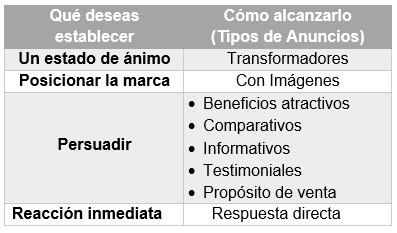Advertising in mobile applications or apps is a very little explored or searched area. Because some developers or their clients do not consider it from the beginning. Or leave it for later.
Since you are planning to create the app, that is to say, you are looking for the niche or market, you are developing it through a gradual process. Be it native or hybrid. You apply factors like monetization and ASO (positioning) and some marketing strategy, you usually think it’s all covered.
Then, the public ones within some of the available mobile application markets (merkaplace) such as Google Play, App Store and Amazon App. And you forget about it. You sit behind your computer or mobile device to see how the downloads start to grow. Hum… no?
Besides, without obsessing you follow the metrics that your new product gives you. Thus, you will see how organic positioning (ASO) is giving life to your creation.
However, implementing an advertising or marketing strategy, before and during the implementation of your project, is essential.
Why is it necessary? Because in addition to entertaining, interacting and making life easier for users with them, you also want to make it profitable. Make money.
If you’ve come this far, it’s because you’re interested in learning more about how to grow your app and what strategies to implement in advertising. If so, continue reading, as you will find in this article, the necessary guidelines to make it known by other means.
- Defining the advertising strategy of the app
It is essential that within the whole set of stages and segments that make up the advertising strategy and communication, you have these 3 factors clear: creativity, clarity of ideas and effective communication.
In that sense, you are going to try to focus the app marketing plan along these lines:
- Reach your target
- To increase sales
- Increase your community and
- Generate quality traffic
- Advertising for mobile applications
To give you a better insight into the world of app marketing. Let’s start by defining broadly. What is advertising?
 According to Wikipedia (2015)…is a form of communication that attempts to increase the consumption of a product or service (…) in the mind of a consumer.
According to Wikipedia (2015)…is a form of communication that attempts to increase the consumption of a product or service (…) in the mind of a consumer.
For others, it is also a means of persuading the public. With the intention that they acquire or use certain goods (products or services). And in this case, your mobile application.
For this reason, it is necessary to highlight two concepts within advertising. The ad and the campaign. The first is a message aimed at persuading a specific audience. And the second is the coordination of several announcements.
And according to the intention of your ads, they can be passive or active. The assets are those that are sent to potential users directly, through email, messages, among others. Because of its intrusive nature, it must be handled with care and delicacy. Ensuring at all times, the protection of the data collected.
On the other hand, passive messages are configured by social networks (RRSS), internet, web and apps themselves. It is less invasive, because the user knows in advance what will appear in these digital media.
So far you have a clearer picture of where the app is sailing in the sea of advertisements, right? No?
Let’s continue now with the general objectives that you can set for your project:

Before continuing, it is important to note some data collected in the “Informe ditrendia 2016 sobre: Mobile en España y en el Mundo” (social report).The study carried out since 2001 shows that:
- Although the majority of users make the selection of apps primarily from the markets, 61% were made by recommendations from friends and 30%by social networks.
- Users are used to paying to use apps. In the case of Spain, the rising figure is 46%.
- In Spain by 2015, the users with the most applications range from 26 to 35 years. Those over 46are somewhat cautious when downloading apps.
• As you can see, the data indicates an increase in the use of mobile devices and apps, not to mention the Internet of things(IoT). Where teams are increasingly connected to each other and to people. For example, the Smartwatch.
Now, what can you achieve through your app advertising strategy? You get to measure the results and benefits, as well as the extent to which they are achieved. Perform segmentation according to your target (audience). It is also a two-way channel. Once you get the feedback from the users and you reply.
- Advertising plan for mobile applications
Here are a number of items, which are not expanded on. But they will help you to plan and implement your marketing strategy now.
- Target or target audience: to whom do I target my ad?
- Objectives: What do I want to achieve? How do I do that?
- Advertiser: information about the creator or company, the app, and the competition.
- Means and budget: channels where to promote it and the resources available.
- Conclusion
As you can see, there are many factors that in the creation of the app. In whose processes, which range from implementation, steps and publication, the marketing will be taken into account, through a plan.
It is true that the number of people using mobile phones and their derivatives is increasing every day. Also, thousands of applications are published in different markets. This trend is turning app development into a growing, innovative and competitive business.
There is much more to discuss on this topic and in more depth, such as the different types of campaigns to use and where to promote your apps.
If you found this content useful, follow us on one of the social networks so that you are always informed about the latest issues around advertising in mobile applications or apps.

